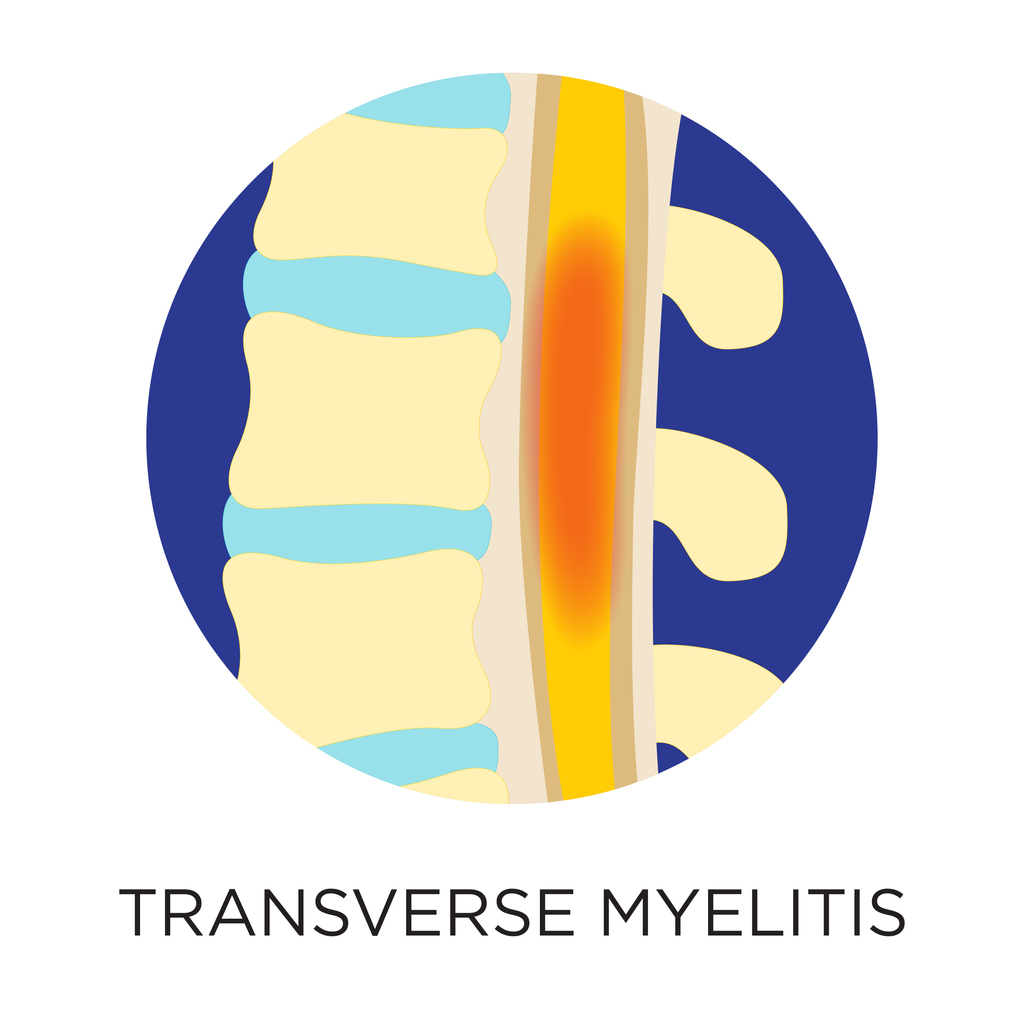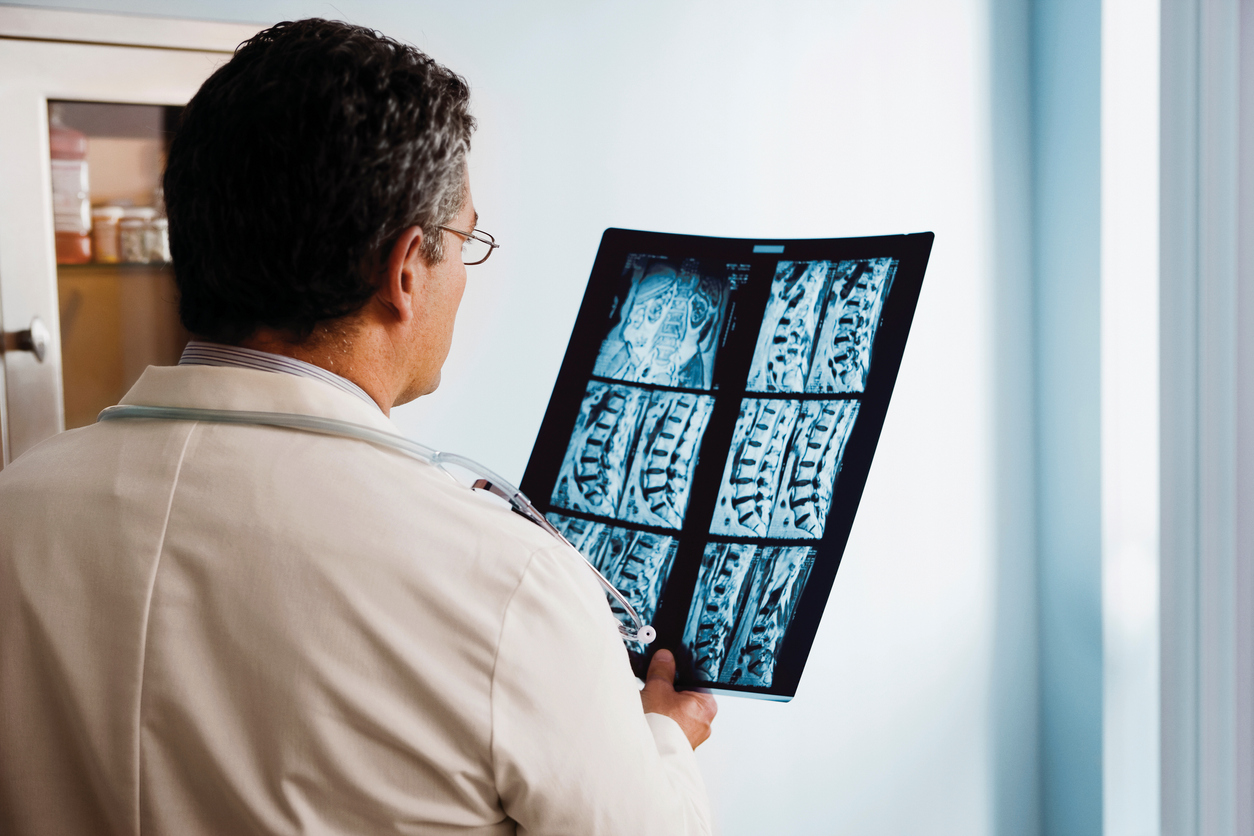Pain
What Is Transverse Myelitis?

Transverse myelitis is a rare neurological condition that interrupts proper communication from the spinal cord nerves to other areas of the body. It is a result of inflammation that damages the myelin sheath, which is the covering that surrounds nerve cells of the spinal cord. Transverse myelitis can occur in any area along the spine and impacts both sides of the spinal cord.
Symptoms
The symptoms of transverse myelitis can develop suddenly or gradually over a few weeks. The signs and symptoms of transverse myelitis include, but are not limited to, the following:
- Weakness in the arms or legs
- Loss of balance
- Muscle spasms
- Numbness, tingling, burning, or other paresthesia sensations
- Sensitivity to touch or temperature
- Pain in the back that radiates down the arms or legs and wraps around the chest or abdomen
- Bladder dysfunction
- Constipation
- Sexual dysfunction
Symptoms and areas of the body that are impacted vary depending on the part of the spinal cord that is affected.
Causes
In many cases, transverse myelitis is idiopathic, meaning the cause is unknown. In other cases, inflammation of the spinal cord may be caused by viral, bacteria or fungal infections. However, fungal infections or parasites are rarely the culprit. Causes include, but are not limited to, the following:
- Viral infections, such as the herpes virus, West Nile virus, influenza, HIV, ZIKA, etc.
- Bacterial infections, such as Lyme disease, tuberculosis, syphilis, etc.
- Inflammatory conditions, such as autoimmune disorders, infectious disease vaccination issues, etc.
Risk factors
Transverse myelitis can impact anyone at any age, regardless of family history, race, or gender. Risk factors for developing transverse myelitis include the following:
- Having a recent viral, bacterial or fungal infection
- Having an inflammatory autoimmune condition, such as lupus, sarcoidosis, or Sjögren's syndrome
- Having a central nervous system disease, such as multiple sclerosis or neuromyelitis optica (Devic’s disease)












